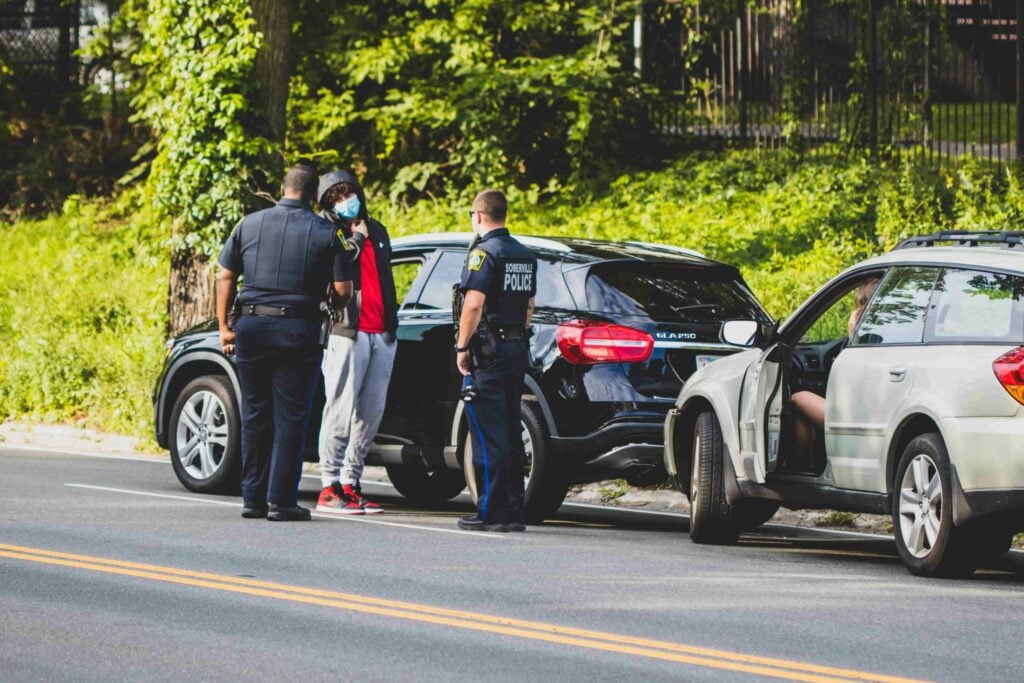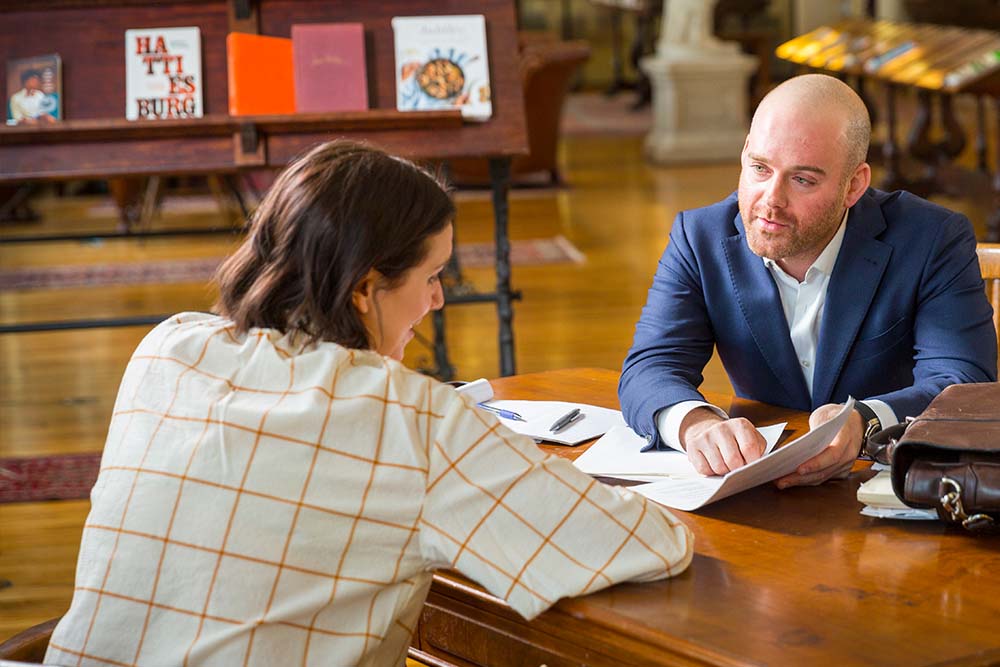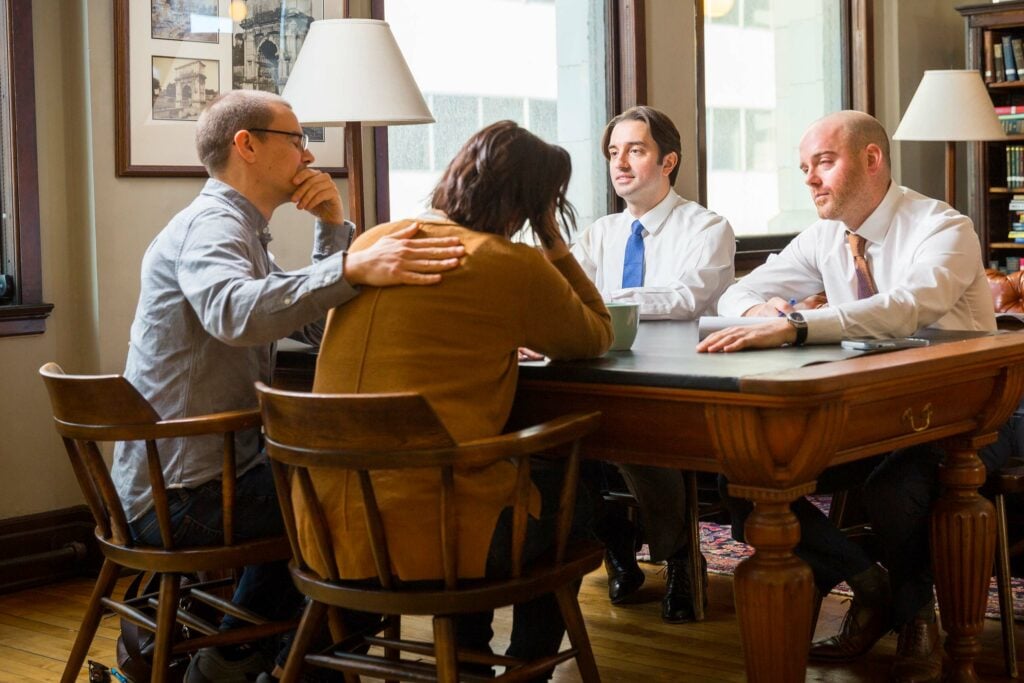If you’ve been in an accident and suffer damages you have a right to fight for compensation. But what sort of case should you pursue? The world of legal jargon can be confusing, especially after being disoriented from the stress of an accident.
There are two different types of cases that can be pursued: civil and criminal. Civil and criminal cases serve different purposes and we can help you to determine which legal route is best for you to take. This guide is here to help you understand the difference between civil and criminal cases.
Here at Spivak and Sakellariou we will take any course of action necessary to get you what you deserve.
Civil Cases
Civil law covers injuries that affect an individual or an individual entity, such as a business. These cases are pursued when the harm only poses a threat to the individual and not the greater society. In a civil case suits are often initiated by the individual party that has been harmed, decided by a judge, and result in monetary damages being awarded as opposed to imprisonment.
In a civil case trial the plaintiff must prove the defendant’s guilt based on a “preponderance of evidence”. Defendants in a civil case are not entitled to the same legal protections as defendants in criminal court cases.
Often, both a criminal and a civil suit can be filed concurrently in the same instance of harm.
Ohio Civil Cases
Specifically in Ohio conviction in a criminal case is not required to pursue a civil case based on injuries sustained. This means that if both a civil and a criminal case were filed the plaintiff does not need to win the criminal case in order to pursue a civil case.
Generally speaking, a civil suit is seeking compensation due to you for wrongdoing that has caused you financial loss and suffering.
Criminal Cases
A criminal case pursues justice against an offender that is perceived as being a threat to the public and greater community, although the immediate victim can be an individual. A criminal case may be pursued in the event of harm that is considered to be a public concern (such as drunk driving, hit and run, or vehicular manslaughter). In a criminal case the state or federal government can initiate the case, the case will most likely be decided by a jury, and the guilt of the defendant must be proven “beyond a reasonable doubt”.
Defendants in a criminal case are also protected against violations of their rights by police or prosecutors.
This includes:
- The Fourth Amendment, which is protections against unreasonable searches or seizures.
- The Fifth Amendment, which is protection against compelled self incrimination.
In a criminal case a guilty party may be subjected to jail time or monetary damages to be paid to the state.
Generally speaking a criminal case is seeking punishment for the wrongdoing that has unended your life.
Civil vs. Criminal, which is right for me?
Deciding what type of case to pursue is entirely dependent on what has happened to cause you harm as a victim. When you are in an accident, never admit wrongdoing or apologize. Always take down all the details at the scene, contact the police to assess the scene, and then contact one of our personal injury lawyers to help you fight for your rights. We are here to help you get what is due to you.
Examples of a Civil Case
Reading up on laws can be murky and confusing. And after an accident you are often rattled, traumatized, and confused. We want to give you some examples to help you understand whether your case is civil or criminal.
- A car accident where both parties exchange information and the victim wishes to pursue a monetary settlement.
- An accident with a cyclist where the cyclist needs a settlement to cover medical bills and physical therapy.
- Any sort of accident that causes pain and suffering.
Usually in a civil case injuries are relatively minor and both parties have cooperated in exchanging information. A civil case may be pursued in a more serious case but it is often also filed alongside a criminal case. This path of action ensures that the at-fault party not only receives a due punishment for their actions but also that the victim can collect the financial losses sustained due to the accident.
Examples of a Criminal Case
- A driver being under the influence of alcohol or drugs.
- A hit and run incident.
- Vehicular manslaughter.
- Reckless driving.
When you’ve been in an accident you should always call 911 to get an officer on the scene to assess the situation. A driver may be found to be a greater threat to the community and in those cases a criminal case may be filed by the state or federal government. Filing a criminal case against a reckless driver is not only important for you, but also for anyone else who may encounter this careless individual.
What Can I Expect in a Trial?
Our accident attorneys are here to give you all the information you need to feel secure and safe in filing a lawsuit. We want to make this process as easy and painless as possible, you’ve suffered too much already. There are some specific factors in Ohio that you should be aware of.
“Shared Fault” System
Ohio uses a comparative fault theory or a “shared fault” system to decide cases like these. You are free to pursue damages if you are injured, but those damages could be reduced by the amount you are found to be at fault. Insurance companies will try to reduce your settlement using this theory. This may sound scary but we are here and ready to fight to stop them from doing so.
Economic and Non-Economic Damages
When you are injured in an accident there are both economic and non-economic damages to be considered.
An example of an economic damage would be medical bills, lost wages, or damages needed to be corrected on your vehicle.
An example of non-economic damages would be pain and suffering caused by the accident.
We are here, and on your side, and we will help you to calculate your monetary loss and to fight for what you deserve. To us any loss is a loss worth fighting for.
Statute of Limitations
In Ohio the statute of limitations for filing a personal injury lawsuit is two years from the time of your accident. This window of time can be increased or decreased by several factors depending on your accident. This makes it imperative that you contact a personal injury lawyer as quickly as possible. One of our attorneys will be happy to assess your case and determine if this will be a factor in filing your lawsuit.
We’re Here to Help
Here at Spivak and Sakellariou we specialize in helping victims of accidents recover what is due to them. There are no upfront costs to partnering with us. We will only ever take a fee if we win the case for you. This is to ensure that every victim feels empowered to fight for their rights without another financial burden.
We take a compassionate one-on-one approach with all of our clients. Our main goal is to help victims regain financial and personal peace of mind after the stress of an accident. If others have turned you away we are here to learn all the nuances of your story and fight for you.
You can call us at (513)-532-2201 at any time (day or night) for a free consultation on your case. We also have a live chat feature on our website.


